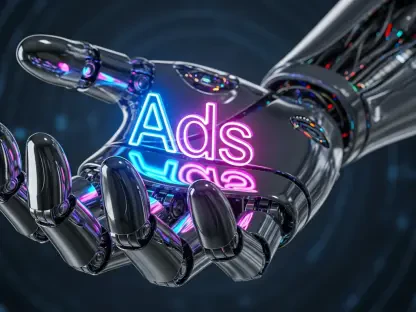Diving into the world of digital marketing, we’re thrilled to sit down with Anastasia Braitsik, a globally recognized leader in SEO, content marketing, and data analytics. With her extensive experience, Anastasia has transformed how teams approach content creation and testing, making experimentation a seamless part of everyday workflows. In this interview, we explore her insights on integrating continuous testing, leveraging automation, balancing speed with strategy, and scaling experiments without overwhelming resources. Let’s uncover the strategies that keep her at the forefront of modern marketing.
How has your approach to content testing evolved over time, and what hurdles did you encounter when it was treated as an afterthought rather than a core process?
Early on, my team approached content testing as a sporadic task, often tacked on after a campaign launch or done quarterly. The biggest hurdle was that it felt like playing catch-up—by the time we tested, the campaign was already live, and any insights came too late to make a real impact. This reactive approach led to missed opportunities and wasted resources. Plus, it disrupted our workflow, as we’d have to pivot suddenly based on last-minute findings. It was clear we needed to shift testing to the forefront of our process to stay ahead.
What challenges arise specifically when testing happens post-launch, and how do they affect your team’s performance?
Testing after a campaign goes live creates a ripple effect of issues. For starters, you’re analyzing performance on something that’s already out there, so any flaws are public and can hurt engagement or conversions before you even get data back. It also puts pressure on the team to scramble for quick fixes, which often leads to burnout or rushed decisions. The biggest impact is on results—without early testing, you’re guessing what works, and that guesswork can tank a campaign’s effectiveness right out of the gate.
Why do you advocate for making content experimentation a constant part of the workflow, and what’s been the biggest benefit of this shift?
Making experimentation an always-on activity flips the script from reactive to proactive. Instead of testing as a separate chore, it’s woven into how we brainstorm, create, and launch content. The biggest benefit is that we’re learning in real time—every piece of content becomes a chance to gather insights, tweak, and improve. This approach keeps us agile and ensures we’re not just hoping for success but actively building toward it with every step.
How did your team adapt to integrating testing into daily operations, and what mindset changes were necessary?
Integrating testing into our day-to-day took some trial and error, but once we started small—testing headlines or visuals on a single platform—it became second nature. The key mindset shift was moving from seeing testing as a burden to viewing it as a growth tool. My team had to embrace curiosity over perfection, understanding that not every test would ‘win’ but every result would teach us something. That perspective made experimentation less intimidating and more of a creative challenge.
How do you strike a balance between speeding up content production and ensuring there’s a solid strategy behind it?
Speed and strategy don’t have to be at odds if you’re intentional about your tools and processes. We focus on automating repetitive tasks so we can spend more time on the big-picture thinking. For instance, using templates or pre-approved assets cuts down on production time without sacrificing brand alignment. The trick is to set clear goals upfront—what are we testing for, and why?—so even fast outputs are tied to a purpose. That balance keeps us moving quickly while staying grounded in strategy.
What role has automation played in streamlining your content testing and production, and can you share a specific example?
Automation has been a game-changer for us. It takes the grunt work out of testing and production, freeing up time for creativity. A specific example is using smart preview tools to see how content variations look across different formats like email, social, or display ads. Instead of manually mocking up each version, the tool auto-formats everything in one dashboard. This not only saves hours but also reduces errors, letting us focus on analyzing performance rather than fiddling with logistics.
How have modular design systems influenced your ability to create and test content at scale?
Modular design systems are like building blocks for content—they’ve revolutionized how we scale. By creating reusable components like headlines, images, or CTAs, we can mix and match to produce dozens of variations from a single concept. For example, with just a handful of core assets, we’ve spun out over 50 ad variations for a single campaign in a matter of hours. This approach saves time, boosts consistency, and lets us test more ideas without starting from scratch every time.
What’s your advice for designing content experiments that can grow in complexity without overwhelming your team?
Start with a strong foundation—clear objectives and the right tools. Move beyond basic A/B tests to multivariate testing, where you can experiment with multiple elements like formats, messaging, and audiences all at once. Use platforms that automate data collection and analysis so your team isn’t bogged down by manual tracking. The key is to design experiments with scalability in mind from the start, so as complexity grows, your systems can handle it without adding stress to your team.
How do you set up experiments to make decisions automatically, and what benefits have you seen from this hands-off approach?
We set pre-defined success metrics—like a specific conversion lift or engagement rate—into our testing platforms. Once those thresholds are met, the system identifies a winner and can even trigger follow-up tests without us stepping in. This hands-off approach saves time and reduces bias in decision-making since it’s data-driven, not gut-driven. The biggest benefit is efficiency; we can focus on strategy while the system handles the routine optimization.
What is your forecast for the future of content experimentation in digital marketing?
I see content experimentation becoming even more integrated and intelligent in the coming years. With advancements in AI and machine learning, testing will move beyond what we manually set up—it’ll predict trends, suggest variations, and optimize in real time with minimal human input. I also think personalization will drive experimentation, with hyper-tailored content tests becoming the norm across every channel. It’s an exciting time, and marketers who embrace these tools early will have a huge edge.









